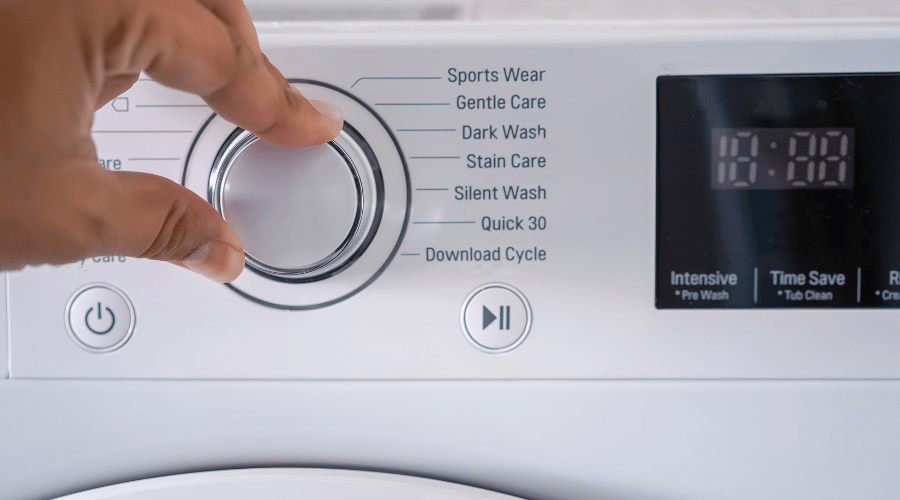How to Clean and Descale Your Washing Machine: Step-by-Step Guide
Regular cleaning and descaling of your washing machine is crucial to maintain its performance, prevent odors, and prolong its lifespan. Over time, mineral deposits, detergent residue, and bacteria can accumulate inside the machine, affecting its efficiency and cleanliness.
In this step-by-step guide, we will walk you through the process of cleaning and descaling your washing machine to keep it running smoothly. Let’s get started!
Table of Contents
1. Gather the Necessary Supplies
2. Clean the Exterior
3. Clean the Drum and Door Seal
4. Clean the Detergent Dispenser and Filter
5. Run a Maintenance Cycle
6. Wipe Down the Exterior and Accessories
7. Regular Maintenance Tips
Step 1: Gather the Necessary Supplies
Before you begin cleaning your washing machine, gather the following supplies:
White vinegar: Vinegar is a natural cleaning agent that helps break down mineral deposits and remove residue from the machine.
Baking soda: Baking soda is effective in eliminating odors and gently scrubbing away stains.
Microfiber cloth: A soft microfiber cloth is ideal for wiping down surfaces without scratching them.
Old toothbrush: An old toothbrush will come in handy for scrubbing hard-to-reach areas and removing stubborn buildup.
Hot water: Hot water helps dissolve detergent residue and mineral deposits.
Mild detergent (optional): If your machine has stubborn stains or odors, you may use a mild detergent for added cleaning power.
Clean, dry towel: Keep a towel nearby for drying off surfaces after cleaning.
Having these supplies ready will make the cleaning process more convenient.
Step 2: Clean the Exterior
Start by cleaning the exterior of your washing machine
- Unplug the washing machine from the power source.
- Dampen a microfiber cloth with a mild detergent solution (if desired) and wipe down the exterior of the machine, including the control panel and knobs.
- Dry the exterior thoroughly with a clean, dry towel.
Step 3: Clean the Drum and Door Seal
The drum and door seal are common areas where dirt, residue, and mold can accumulate. Follow these steps to clean them.
1. Open the door and inspect the drum and door seal for any visible dirt, lint, or residue.
2. Mix a solution of equal parts water and white vinegar in a spray bottle.
3. Spray the mixture directly onto a microfiber cloth or sponge.
4. Wipe down the drum and door seal, paying close attention to any mold or mildew spots.
5. For stubborn stains or buildup, make a paste using equal parts baking soda and water. Apply the paste to the stains and let it sit for 15 minutes before scrubbing with an old toothbrush.
6. Thoroughly rinse the drum and door seal with a damp cloth to remove any vinegar or baking soda residue.
Step 4 :Clean the Detergent Dispenser and Filter
To ensure proper detergent distribution and prevent clogs, clean the detergent dispenser and filter.
1. Remove the detergent dispenser drawer from the machine.
2. Soak the drawer in a solution of warm water and mild detergent.
3. Use an old toothbrush or sponge to scrub away any residue or buildup.
4. Rinse the drawer thoroughly with water and allow it to dry completely.
5. Check the machine’s manual to locate and clean the filter, if applicable. Follow the manufacturer’s instructions to remove and clean the filter, removing any debris or blockages.
Step 5: Run a Maintenance Cycle
Running a maintenance cycle with vinegar helps remove mineral deposits and eliminate odors. Follow these steps
1.Pour 2 cups of white vinegar into the detergent dispenser or directly into the drum.
2.Set the washing machine to the hottest water setting.
3.Run a complete wash cycle without any laundry in the machine.
4.Once the cycle is complete, open the door and allow the drum to air dry.
Step 6: Wipe Down the Exterior and Accessories
After running the maintenance cycle, wipe down the exterior and accessories
1.Dampen a clean microfiber cloth with water and wipe down the exterior of the machine, removing any remaining residue or vinegar.
2.Wipe down any accessories, such as the control panel, knobs, and detergent dispenser, with a damp cloth.
Step 7: Regular Maintenance Tips
To keep your washing machine in optimal condition, follow these regular maintenance tips
1.Keep the washing machine door slightly ajar between uses to allow airflow and prevent moisture buildup.
2.Clean the drum and door seal regularly, especially if you notice any mold or mildew.
3.Use the appropriate amount of detergent to avoid excessive residue buildup.
4.Check and clean the filter and drain pump periodically as per the manufacturer’s instructions.
5.Regular cleaning and descaling of your washing machine are essential for maintaining its 6.performance and cleanliness. By following this step-by-step guide and incorporating regular maintenance tips, you can keep your washing machine running smoothly, ensuring fresh and clean laundry every time. Remember, a little care goes a long way in prolonging the lifespan of your washing machine.
Conclusion
Regular cleaning and descaling of your washing machine are essential for maintaining its performance and cleanliness. By following this step-by-step guide and incorporating regular maintenance tips, you can keep your washing machine running smoothly, ensuring fresh and clean laundry every time. Remember, a little care goes a long way in prolonging the lifespan of your washing machine.
FAQs
-
Why is it important to clean and descale my washing machine regularly?
Regular cleaning and descaling of your washing machine help maintain its performance, prevent odors, and prolong its lifespan. It removes mineral deposits, detergent residue, and bacteria that can accumulate over time and affect the machine’s efficiency and cleanliness.
-
How often should I clean and descale my washing machine?
It is recommended to clean and descale your washing machine at least once every three months or as needed. However, if you notice any odors, visible buildup, or issues with performance, it’s best to clean it more frequently.
-
Can I use regular household cleaners instead of vinegar and baking soda?
It’s generally recommended to use white vinegar and baking soda for cleaning and descaling your washing machine. They are natural and effective cleaning agents that are safe for the machine. Regular household cleaners may contain harsh chemicals that can damage the machine or leave residue
-
Do I need to clean the detergent dispenser and filter?
It is recommended to clean and descale your washing machine at least once every three months or as needed. However, if you notice any odors, visible buildup, or issues with performance, it’s best to clean it more frequently.
-
Can I use regular household cleaners instead of vinegar and baking soda?
It’s generally recommended to use white vinegar and baking soda for cleaning and descaling your washing machine. They are natural and effective cleaning agents that are safe for the machine. Regular household cleaners may contain harsh chemicals that can damage the machine or leave residue.
-
Do I need to clean the detergent dispenser and filter?
Yes, cleaning the detergent dispenser and filter is important. The dispenser can accumulate residue and lead to clogs, affecting detergent distribution. The filter may collect debris and blockages, reducing the machine’s efficiency. Regular cleaning ensures proper functioning.
-
Can I use bleach instead of vinegar for descaling?
While bleach can help remove stains and disinfect, it is not recommended for descaling your washing machine. Bleach can be harsh on the machine’s components and may cause damage. Stick to white vinegar as a safe and effective descaling agent.
-
Is it necessary to run a maintenance cycle with vinegar?
Running a maintenance cycle with vinegar is highly recommended. It helps remove mineral deposits, eliminate odors, and keep the internal components clean. Vinegar is a natural and affordable solution for maintaining your washing machine’s performance.
-
How long does the maintenance cycle with vinegar take?
The maintenance cycle with vinegar typically takes around one to two hours, including the soak time. This allows the vinegar to effectively clean and descale the machine. Make sure to follow the specific instructions for your machine’s cycle duration.
-
Should I clean the washing machine drum and door seal separately?
Yes, cleaning the drum and door seal separately is important. They are common areas where dirt, residue, and mold can accumulate. By cleaning them individually, you can ensure thorough cleaning and prevent any cross-contamination.
-
Can I use a high-pressure washer to clean the washing machine?
It’s not recommended to use a high-pressure washer to clean the washing machine. The high-pressure water can damage the machine’s sensitive components and electronics. Stick to gentle cleaning methods using vinegar, baking soda, and a soft cloth.
-
Are there any specific maintenance tips to follow after cleaning the washing machine?
After cleaning your washing machine, it’s recommended to keep the door slightly ajar to allow airflow and prevent moisture buildup. Also, check and clean the filter and drain pump periodically as per the manufacturer’s instructions to ensure proper functioning.

